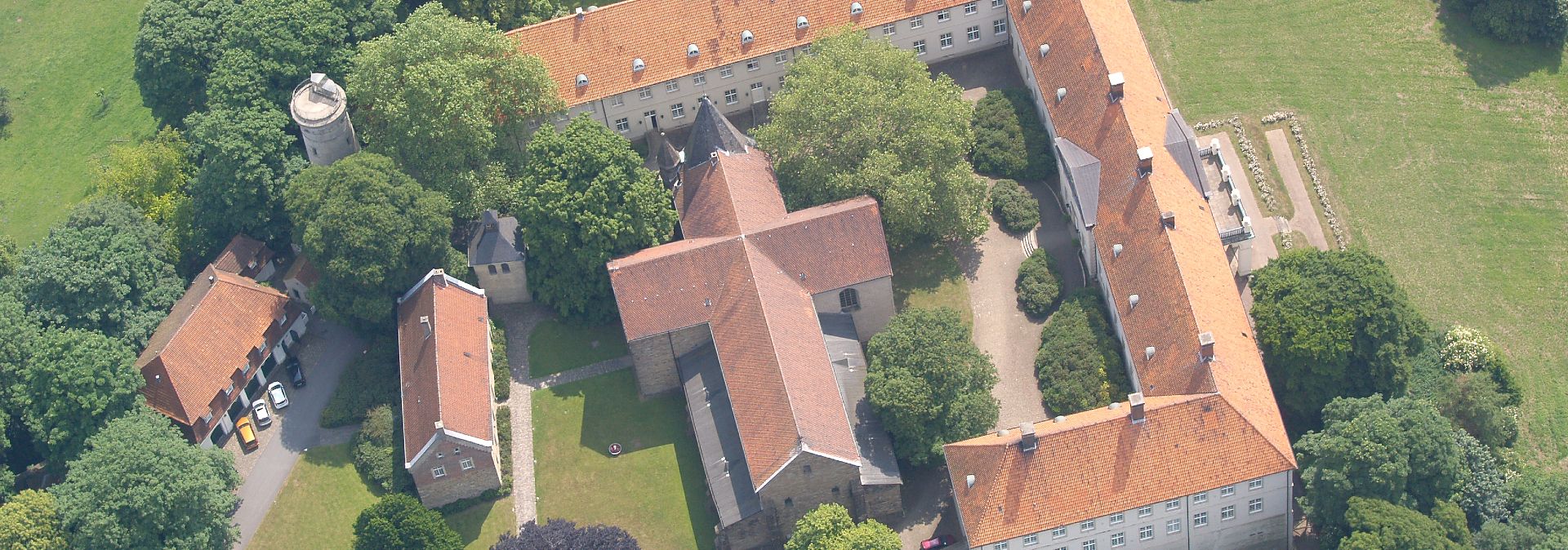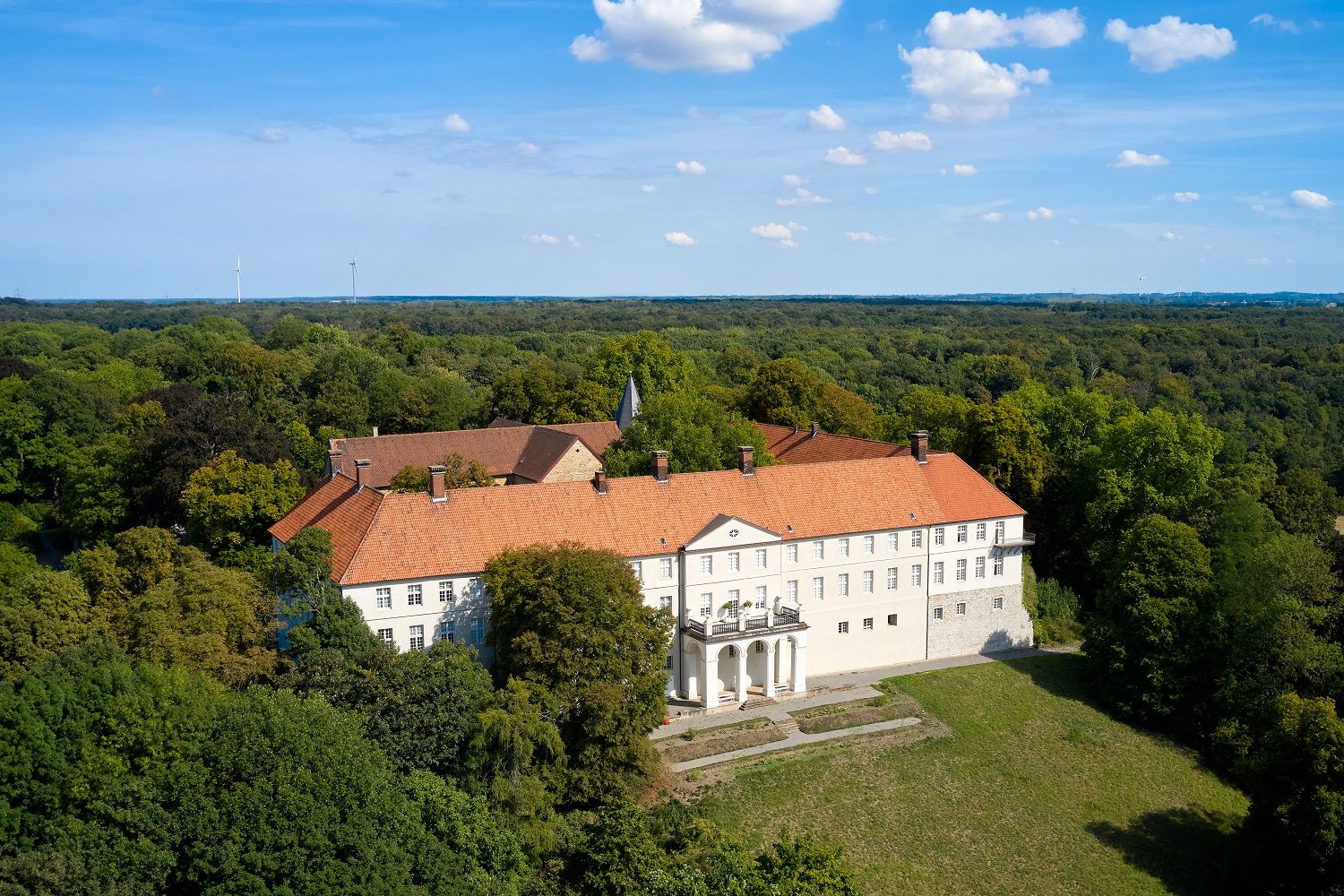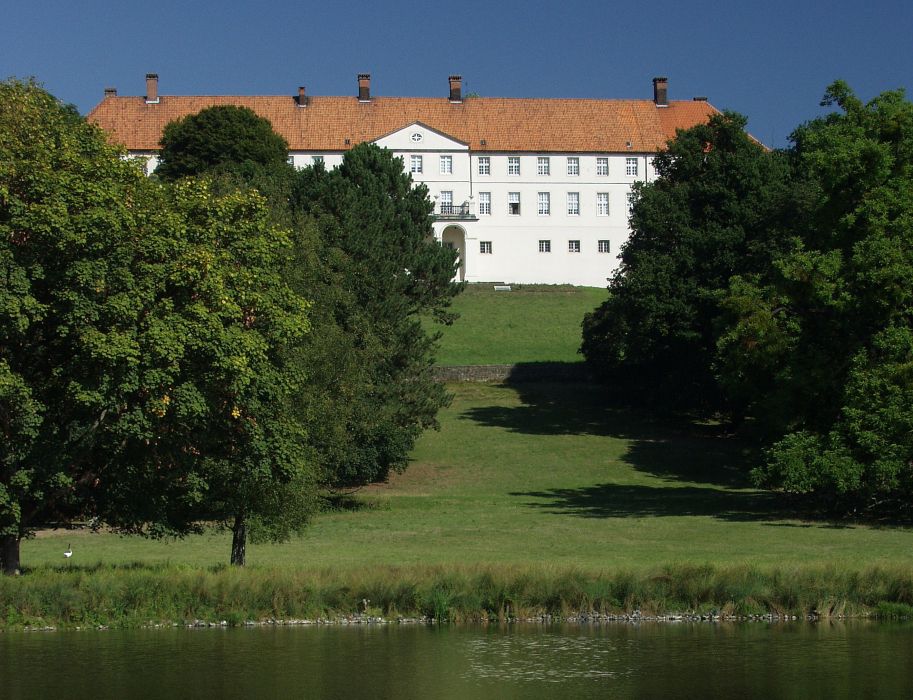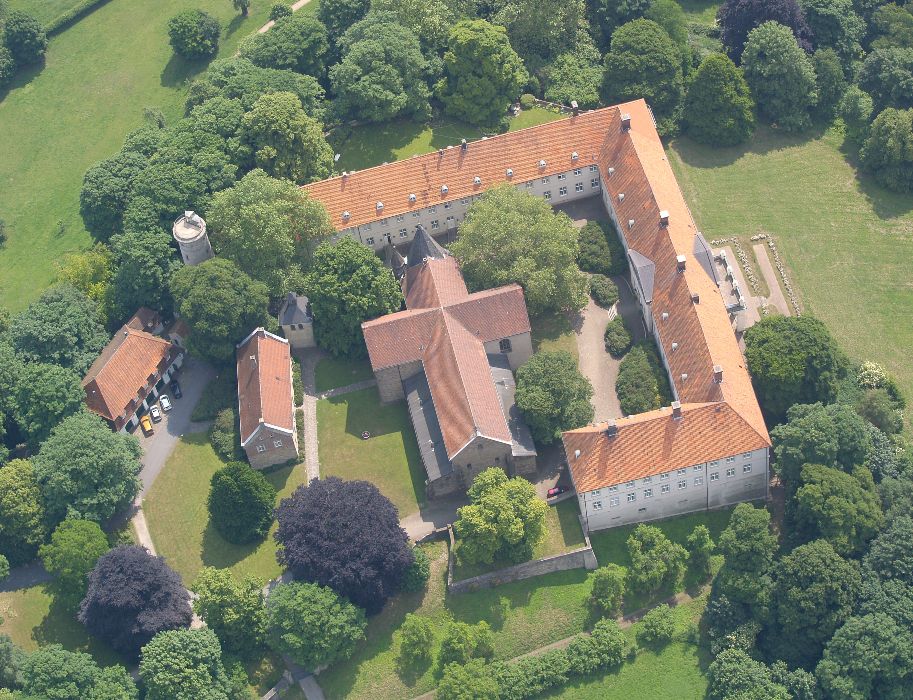The Catholic Premonstratensian order built the centre of faith in Cappenberg in Münsterland back in the 12th century. The Romanesque collegiate church from this period is now a venue for concerts and church services. The complex with its main castle from the 17th century has been transformed into a cultural centre of attraction with a museum and temporary exhibitions.
Idyllic, peaceful and steeped in history: on the ridge of the Selm suburb of Cappenberg, the castle of the same name exudes a magical attraction. In the 12th century, the Catholic Premonstratensian order founded its first monastery in the German-speaking world here, with a Romanesque collegiate church at its centre. In the 17th century, the owners erected the three-winged main castle in Baroque style after the previous monastery building was destroyed in the Thirty Years' War. Since then, it has framed the listed place of faith and is one of the most important examples of Westphalian monastic architecture.
Concerts in the collegiate church
Today, the entire complex is a place of pilgrimage for culture lovers and those seeking relaxation alike, as the facility has been transformed into a cultural centre in the midst of a beautiful landscape. This is partly due to the engaging concerts that take place in the former collegiate church and partly due to the impressive museum in the main building, which is run jointly by the Landschaftsverband Westfalen-Lippe (LWL) and the district of Unna. World-class art exhibitions alternate here and the permanent exhibition "Baron vom Stein and Cappenberg" is open to everyone. After five years of construction, during which the castle was extensively renovated inside and out, it has shone in new splendour since April 2022.
Until then, visitors can marvel at the famous Cappenberg Barbarossa head - a portrait bust of the respected Hohenstaufen emperor made of gilded bronze (around 1160) - in the southern transept of the basilica. It is currently used by the parish of St John the Evangelist as a Catholic parish church and place of remembrance, but is open to everyone on guided tours.
View over the region
If you are staying longer, it is also worth climbing the viewing platform of the nearby water tower. It offers travellers the perfect view over the region after a tour of the castle. Alternatively, tourists can visit the Freiherr von Stein monument to the west of the castle, which is dedicated to the Prussian reformer, minister and previous owner of Cappenberg Castle. Nordkirchen Castle is also only around twelve kilometres away. However, those interested should plan enough time for a subsequent visit.
Weekend holiday with a castle tour or visit to the slag heap
The Selm district of Cappenberg is known for its idyllic landscape. After a visit to the historical site, travellers who want to combine a cultural and nature experience can take a walk in the Cappenberg Forest. The local forest school even offers tours and events on biodiversity, rural life and climate protection for families with children.
Guests taking a break on the grounds of the former Premonstratensian monastery should stop off at the Café Alte Kegelbahn. The family-run organic café relies on fresh ingredients from the surrounding area, some of which are grown and harvested on the day of processing. In addition to seasonal dishes, gourmets can enjoy homemade cakes, pies and waffles. Alternatively, coffee fans can visit the Alte Kaffeerösterei in Lünen with its bar and bistro.
First excursion tip: For weekend holidays, we recommend a three-part castles and palaces tour in Münsterland. Nordkirchen Castle and Vischering Castle in Lüdinghausen are both half an hour's drive from Cappenberg Castle. A cycle tour to the sights is also possible. Nordkirchen Castle is known as the "Versailles of Westphalia". Explorers can discover one of the most beautiful gardens in Europe here. Vischering Castle is one of the oldest moated castles in Westphalia. It boasts a permanent interactive exhibition where guests can follow the ancestors of the Droste zu Vischering family through the centuries.
Second excursion tip: As an alternative to the castle tour, culture lovers can trace the region's industrial history by climbing the Großes Holz spoil tip in Bergkamen or the Brockenscheidt spoil tip in Waltrop. The former is home to the "Impuls" artwork, a 33-metre-high light sculpture with 14,400 shining LED lights that radiate far across the surrounding countryside to Cappenberg Castle. At the second site, old mining relics have been transformed into new art. A tower made from worn-out slats now serves as a viewing platform at the top of the spoil tip.
First overnight tip: Seepark Ternsche in Selm is around 15 minutes' drive from Cappenberg Castle. In addition to the typical camping options, there are seven safari tents with solid wooden floors, two holiday homes and a Swedish house on stilts right on the lake.
Second accommodation tip: If you prefer a hotel to a campsite, you should make a note of the Restaurant-Hotel Baumhove in Werne. It is housed in a 500-year-old, listed half-timbered house that has always been family-owned. The catering is certified organic and many products such as meat, vegetables and bread come directly from the region.




